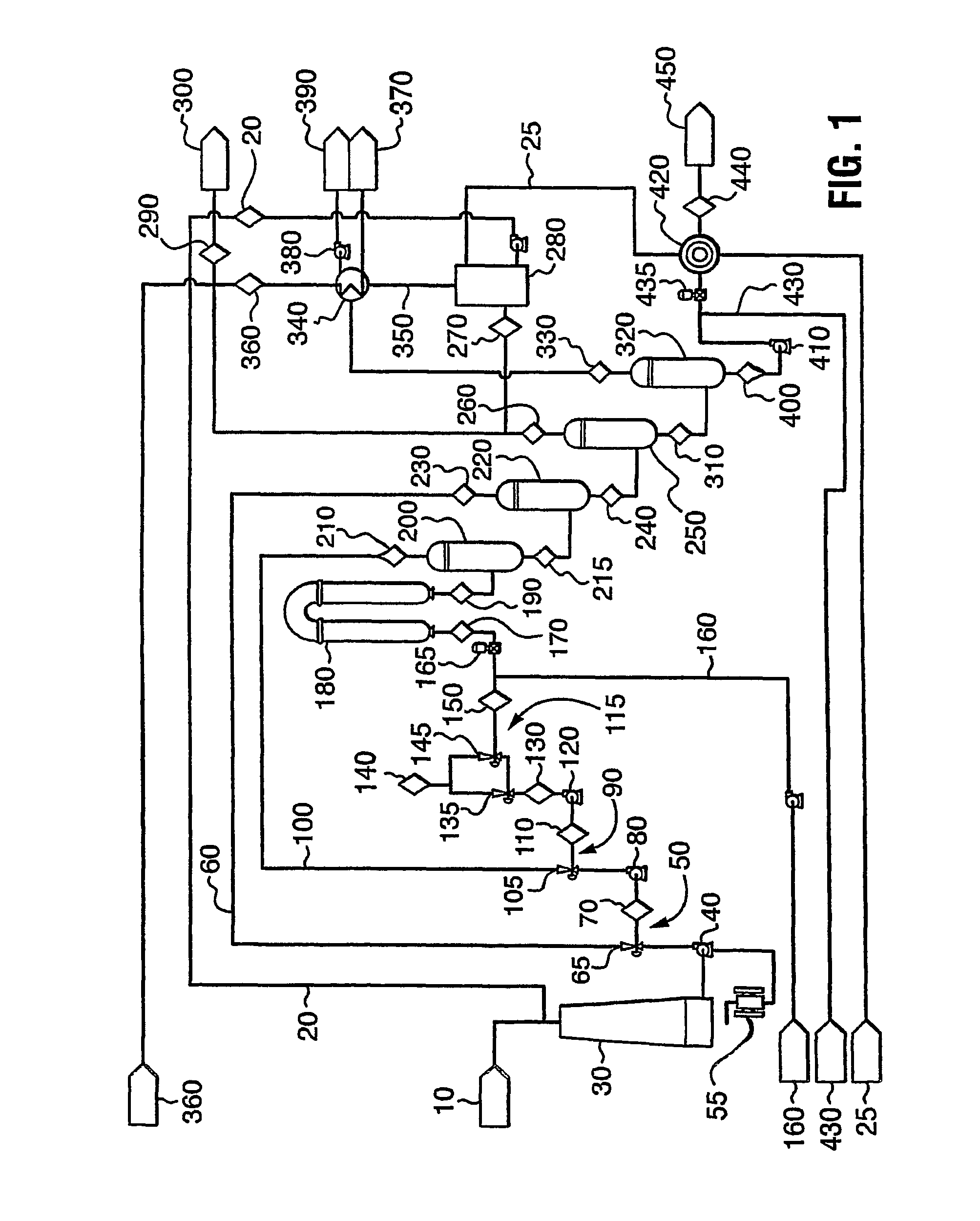Continuous flowing pre-treatment system with steam recovery
a pre-treatment system and steam recovery technology, which is applied in the direction of saccharide production, liquid hydrocarbon mixture production, food science, etc., can solve the the inability to expand the production of ethanol from these sources, and the conversion process is a negative environmental impact of so as to avoid the inefficiencies associated with the use of these feedstocks, avoid additional heating costs, and avoid the effect of expens
- Summary
- Abstract
- Description
- Claims
- Application Information
AI Technical Summary
Benefits of technology
Problems solved by technology
Method used
Image
Examples
example 1
[0073]With reference to FIG. 1, the feedstock 10, for example but not limited to wheat straw may be prepared by a shearing, crushing or a combination thereof operation, resulting in small particles at 54% moisture. About 70,000 kg / hr wheat straw (dry basis) may be slurried in 370,000 kg / hr water 20 at a temperature of about 93° C. in a drop leg (30) to reach a solids content of 14.4%.
[0074]The feedstock slurry is conveyed by pump 40 to the first stage of the heating train 50. Pump 40 may be a MC (medium consistency) pump with vacuum pump to handle the thick slurry. The heat to this stage is provided by direct injection of 32,200 kg / hr steam 60, for example at about 166° C. This injection heats the slurry to about 131° C.
[0075]The first stage slurry 70 is conveyed by pump 80 to the second stage of the heating train 90. Flash steam 100 at about 192° C. is injected at a rate of 37,300 kg / hr into this stream to heat the stream to about 168° C.
[0076]The heated slurry 110 is conveyed to t...
PUM
| Property | Measurement | Unit |
|---|---|---|
| temperature | aaaaa | aaaaa |
| temperature | aaaaa | aaaaa |
| pressures | aaaaa | aaaaa |
Abstract
Description
Claims
Application Information
 Login to View More
Login to View More - R&D
- Intellectual Property
- Life Sciences
- Materials
- Tech Scout
- Unparalleled Data Quality
- Higher Quality Content
- 60% Fewer Hallucinations
Browse by: Latest US Patents, China's latest patents, Technical Efficacy Thesaurus, Application Domain, Technology Topic, Popular Technical Reports.
© 2025 PatSnap. All rights reserved.Legal|Privacy policy|Modern Slavery Act Transparency Statement|Sitemap|About US| Contact US: help@patsnap.com


